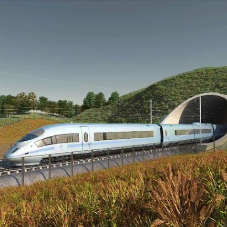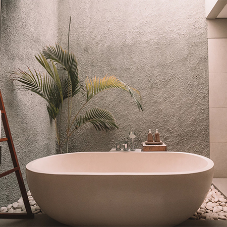Bioplastics or biomaterials have been around for a while. But, the use of biomaterials and particularly bioplastics in construction is a growing trend in the industry with the rise in popularity of green architecture and eco builds.
Firstly, what is a bioplastic? To put it simply, a bioplastic is a plastic that is made from of renewable biomass sources instead of from petroleum.
Not to be confused with biodegradable plastics, those are a different thing, and not all bioplastics are biodegradable.
Are you still with me?
Plant based bioplastics are great for packaging and other short-term plastic products, for example you can get plastics made from corn-starch. Though, these kind of bioplastics would quickly biodegrade and wouldn’t be any use for the construction industry long term.
However, the beautiful thing about bioplastics is they can be created by using the by-products of industry that would otherwise be wasted or even act as pollutants.
Two exciting products in the world of Bioplastics are AirCarbon™ and Liquid Wood.
AirCarbon™ is a material manufactured by Newlight Technologies, a California based company, which sequesters carbon emissions to create plastics. By combining air with methane-based carbon emissions they are able to replace the oil in plastics with AirCarbon™. Preventing the waste carbon admissions from industry from polluting the air.
Liquid wood, or Arboform, was invented by German company Tecnaro GmbH. It is made from lignin the natural waste product from the paper industry. Lignin is responsible for the compressive strength in natural wood and makes a cracking bioplastic.
Lignin is combined with natural fibres resulting in a product that looks like wood but acts like a plastic.
Liquid wood is durable and can withstand combined tensile and compressive loads.
The ArboSkin bioplastic façade created by Stuttgart Universities Institute of Building Construction and Structural Design, is just an example of what the construction industry could do with bioplastics.
Collaborating with scientists, architects, product designers, manufacturing technicians and environmental experts they were able to develop a new material for façade cladding made primarily from renewable resources.
The end product was Aroblend, bioplastic granules that can be extruded into sheets which can then be drilled, printed, laminated, laser cut or thermoformed as needed. A durable and diverse bioplastic product.
Bioplastics are by no means a perfect eco solution but they do open up a whole variety of options for the future of construction and manufacturing.
Have you used bioplastics before? What are your thoughts? Join our discussion on LinkedIn









